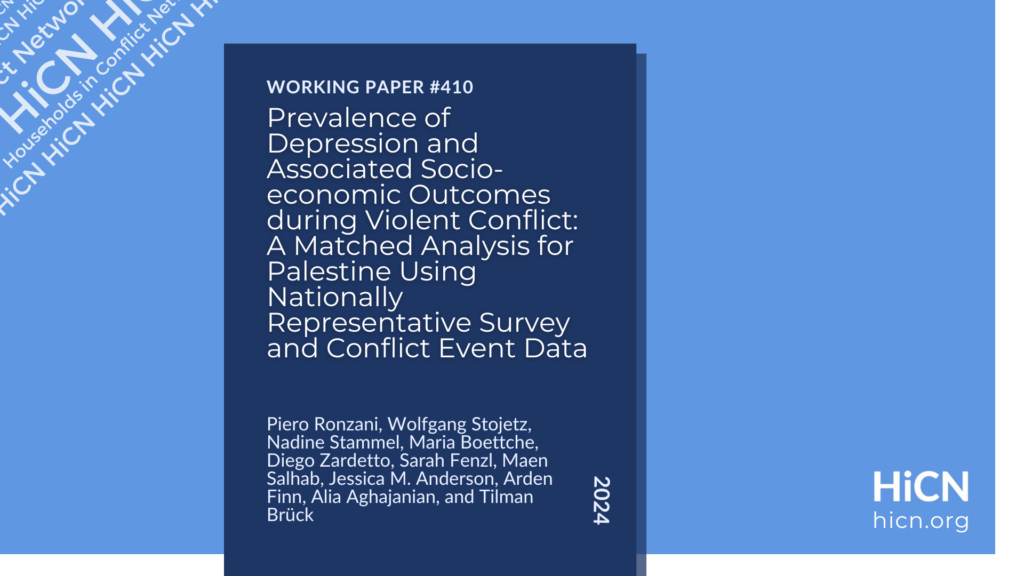
Mental health risks are high in conflict settings, but mental health research mostly focuses on non-conflict settings. Survey data from active conflict settings often suffer from low response rates, unrepresentative samples, and a lack of detailed information on the roots and implications of poor mental health. We overcome these challenges by analyzing nationally representative evidence on the prevalence, sources, and socio-economic correlates of depression, a highly disabling and costly public health issue, in an active conflict setting. We analyze nationally and sub-nationally representative geocoded survey data from the Palestinians’ Psychological Conditions Survey, collected from 5,877 Palestinian individuals in West Bank and Gaza in 2022. We calculate representative depression statistics, disaggregate by sub-areas and across socio-demographic groups, and estimate the associations with geocoded violent conflict event data as well as survey-based trauma exposure across conflict types and socio-economic outcomes. 58 percent (SE=2·21) of adults in Palestine exhibit depressive symptoms. Prevalence is highest in Gaza (71 percent, SE=2·70), increases with exposure to violent conflict and traumatic events, and is associated with worse socio-economic outcomes. The associated losses for 2022 are equivalent to 732,555 Years Lost in Disability, representing 8·9 percent of Palestine’s GDP. Those exposed to violence and traumatic events are disproportionately affected by depression in conflict settings, which may fuel poverty and instability. Scalable investments in mental health in conflict settings promise to not only support well-being but also strengthen productivity and social cohesion for a given level of violence.